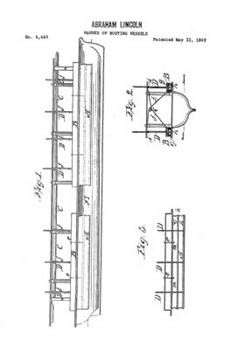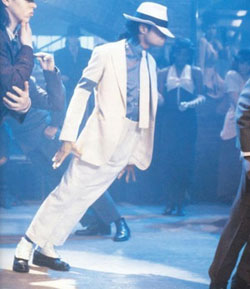 Abraham Lincoln received patent #6469 on May 22, 1849 for a device to lift boats over shoals. His device was never manufactured but he did become the only president to hold a patent.
Abraham Lincoln received patent #6469 on May 22, 1849 for a device to lift boats over shoals. His device was never manufactured but he did become the only president to hold a patent.
Lincoln had considerable experience as a boatman. Once while taking a boatload of merchandise down the Mississippi River, his boat slid into a dam. Traveling the Great Lakes on another trip, his boat ran afoul of a sandbar. Lincoln noticed that the efforts to free the boat were similar on both occasions. Lincoln began working on an invention to solve this problem between sessions of Congress in 1848. His solution was a set of bellows attached to the boat just below the water line. When the boat came upon shallow water, the bellows were filled with air that moved the vessel and made it float higher. Continue reading “Presidential Patents – Lincoln’s Invention for Lifting Boats”


 Remember the video for “Smooth Criminal?”
Remember the video for “Smooth Criminal?”
 Edison executed the first of his 1,093 successful U.S. patent applications on 13 October 1868, at the age of 21. He filed an estimated 500–600 unsuccessful or abandoned applications as well.
Edison executed the first of his 1,093 successful U.S. patent applications on 13 October 1868, at the age of 21. He filed an estimated 500–600 unsuccessful or abandoned applications as well. On May 15 1809, Mary Dixon Kies received the first U. S. patent issued to a woman. Kies, a Connecticut native, invented a process for weaving straw with silk or thread. First Lady, Dolley Madison praised her for boosting the nation’s hat industry. Unfortunately, the patent file was destroyed in the great Patent Office fire in 1836. Until about 1840, only 20 other patents were issued to women. The inventions related to apparel, tools, cook stoves, and fire places.
On May 15 1809, Mary Dixon Kies received the first U. S. patent issued to a woman. Kies, a Connecticut native, invented a process for weaving straw with silk or thread. First Lady, Dolley Madison praised her for boosting the nation’s hat industry. Unfortunately, the patent file was destroyed in the great Patent Office fire in 1836. Until about 1840, only 20 other patents were issued to women. The inventions related to apparel, tools, cook stoves, and fire places.